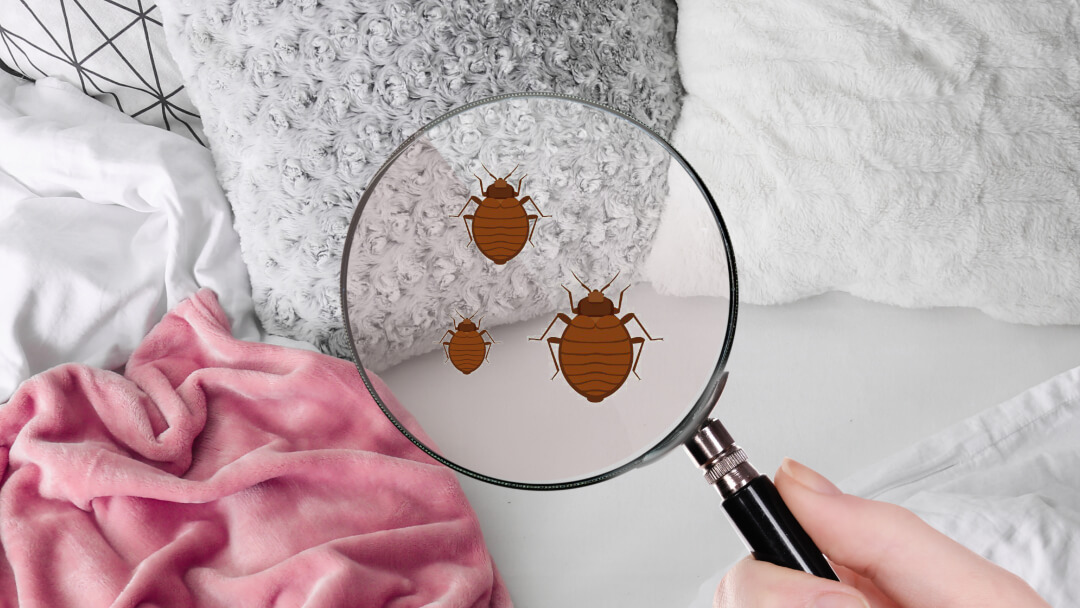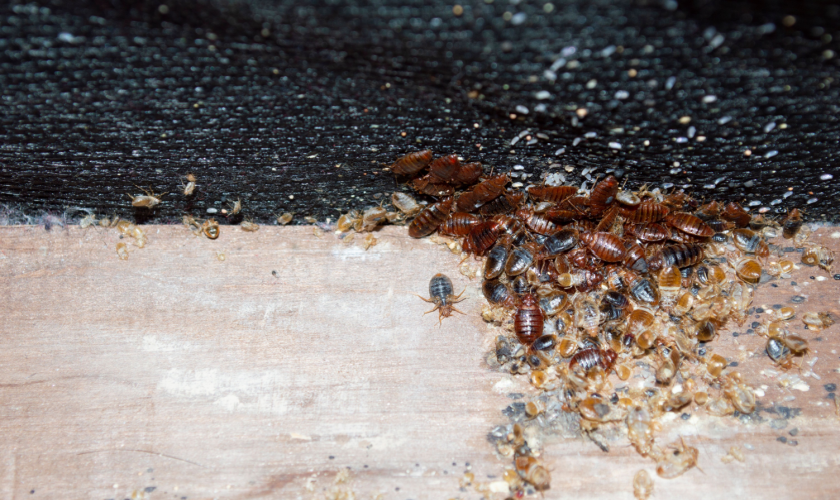Get Informed About the Kinds Of Pest Control Techniques and Their Benefits for Homeowners
Understanding the various parasite control methods offered to home owners is necessary for reliable parasite management. Homeowners that are knowledgeable can make strategic choices that not only address bug concerns yet additionally enhance the total quality of their living atmosphere.
Chemical Bug Control Techniques
Chemical bug control approaches are an essential part of incorporated pest monitoring techniques for home owners seeking reliable services to pest invasions. These approaches entail the application of chemical substances created to remove or prevent parasites that threaten personal effects, wellness, and comfort. Typical chemicals used include insecticides, rodenticides, herbicides, and fungicides, each customized to target specific insects.
The key advantage of chemical insect control is its fast performance; numerous formulations supply prompt outcomes, lowering pest populaces substantially in a brief time. Furthermore, developments in chemical formulas have actually brought about items that are more eco friendly and have lower toxicity degrees for non-target microorganisms when used properly.

Organic Pest Control Methods
All-natural parasite control approaches have obtained prestige as home owners seek more secure and more sustainable choices to typical chemical methods. Biological bug control techniques use natural predators, parasites, or microorganisms to handle parasite populaces effectively. This technique is not just eco-friendly however additionally decreases the threat of injury to non-target varieties, consisting of advantageous pests and wildlife.
Among the most usual biological control approaches entails introducing natural killers right into the setting. As an example, ladybugs can be utilized to control aphid populations, while nematodes target soil-dwelling insects like grubs. Additionally, parasitoids-- microorganisms that reside on or within a host-- can be utilized to regulate particular bug varieties by laying eggs inside them, inevitably leading to their death.
An additional method is using biopesticides, which are stemmed from all-natural materials such as microorganisms, minerals, or plants (bed bug exterminator). These products can properly target pests while posturing marginal risk to people and pets. Overall, organic bug control strategies offer property owners with a reliable ways of bug monitoring that aligns with ecological principles, advertising a healthier living atmosphere while lowering reliance on artificial chemicals
Mechanical Pest Control Strategies
Mechanical pest control methods incorporate a variety of techniques that literally stop or remove parasites without using chemicals. These methods are especially useful for property owners looking for eco-friendly options while ensuring the security of their space.
One typical technique is using obstacles, such as displays, catches, and webs, which protect against parasites from getting in homes or specific locations. Installing window screens can efficiently maintain bugs out, while utilizing physical obstacles around yards can prevent larger pests like deer or rabbits. Furthermore, mechanical traps designed for rats can capture and remove these pests without the need for hazardous materials.
An additional effective approach entails the usage of brooms and vacuums to remove parasites straight from surface areas. Routine cleaning and maintenance can substantially lower pest populations by eliminating click for info food resources and hiding spots. Utilizing devices like ultrasonic pest repellents can discourage various insects via audio waves that are unpleasant to them but inaudible to humans.
Cultural Bug Control Practices
Social pest control practices concentrate on changing the environment and monitoring strategies to create problems that are much less favorable to pest problems. These practices are fundamental in maintaining a balanced ecosystem and lowering the dependence on chemical treatments. By changing agricultural practices, home owners can properly discourage insects while promoting plant wellness.
One typical strategy includes crop turning, which interferes with the life process of bugs by altering the kinds of plants expanded in a particular area (bed bug exterminator). This not just decreases pest populations but likewise enhances soil wellness. Additionally, intercropping-- growing varied crops in closeness-- can perplex bugs and decrease their capability to locate their recommended host plants
Water administration is one more essential aspect of social techniques. Correct watering methods can prevent standing water, which works as a breeding ground for insects and other parasites. In addition, maintaining cleanliness in and around the home, such as routinely eliminating debris and food waste, can significantly decrease bug attraction.
Incorporating these social techniques right into an extensive insect management method enables property owners to produce a setting that normally deters insects, therefore improving the efficiency of various other control techniques while promoting sustainable horticulture and landscaping.

Integrated Insect Administration Approaches
Integrated Bug Management (IPM) stands for an all natural technique that integrates numerous techniques to efficiently handle pest populaces while minimizing ecological impact. This methodology integrates organic, social, physical, and chemical methods to accomplish sustainable pest control. By analyzing pest populations and their natural bee control enemies, IPM emphasizes tracking and recognizing pests before executing control steps.
One of the core principles of IPM is the usage of limits, which establish the level of parasite activity that requires treatment. This guarantees that treatments are used just when essential, decreasing the reliance on chemical pesticides. Organic control approaches, such as presenting all-natural killers or parasites, work in combination with social practices like plant turning and habitat manipulation to interrupt pest life process.
Furthermore, IPM encourages the usage of least-toxic chemical choices when intervention is essential, focusing on items that posture marginal danger to non-target organisms and the environment. For house owners, embracing IPM comes close to not only improves the efficacy of bug monitoring however also advertises a much healthier living atmosphere, promoting biodiversity and decreasing chemical termite direct exposure. Ultimately, IPM encourages homeowners to make educated decisions that balance insect control with environmental duty.
Verdict
To conclude, recognizing the various pest control techniques empowers house owners to make educated choices regarding pest monitoring. Each strategy-- chemical, organic, mechanical, cultural, and incorporated parasite monitoring-- uses unique advantages that provide to various requirements and choices. By choosing ideal techniques, property owners can effectively take care of bug populaces while decreasing health and wellness risks and ecological influences. This educated method adds to a healthier living setting, advertising general wellness for family members and animals alike.
Understanding the various parasite control techniques readily available to homeowners is important for reliable bug management.Chemical parasite control methods are a critical component of incorporated bug management methods for property owners seeking effective options to pest problems. Overall, biological bug control strategies offer house owners with an efficient ways of bug management that lines up with eco-friendly principles, advertising a much healthier living setting while reducing reliance on artificial chemicals.
Social insect control practices focus on modifying the environment and administration methods to develop conditions that are less conducive to pest problems.In verdict, recognizing the various insect control methods equips property owners to make enlightened choices relating to pest management.